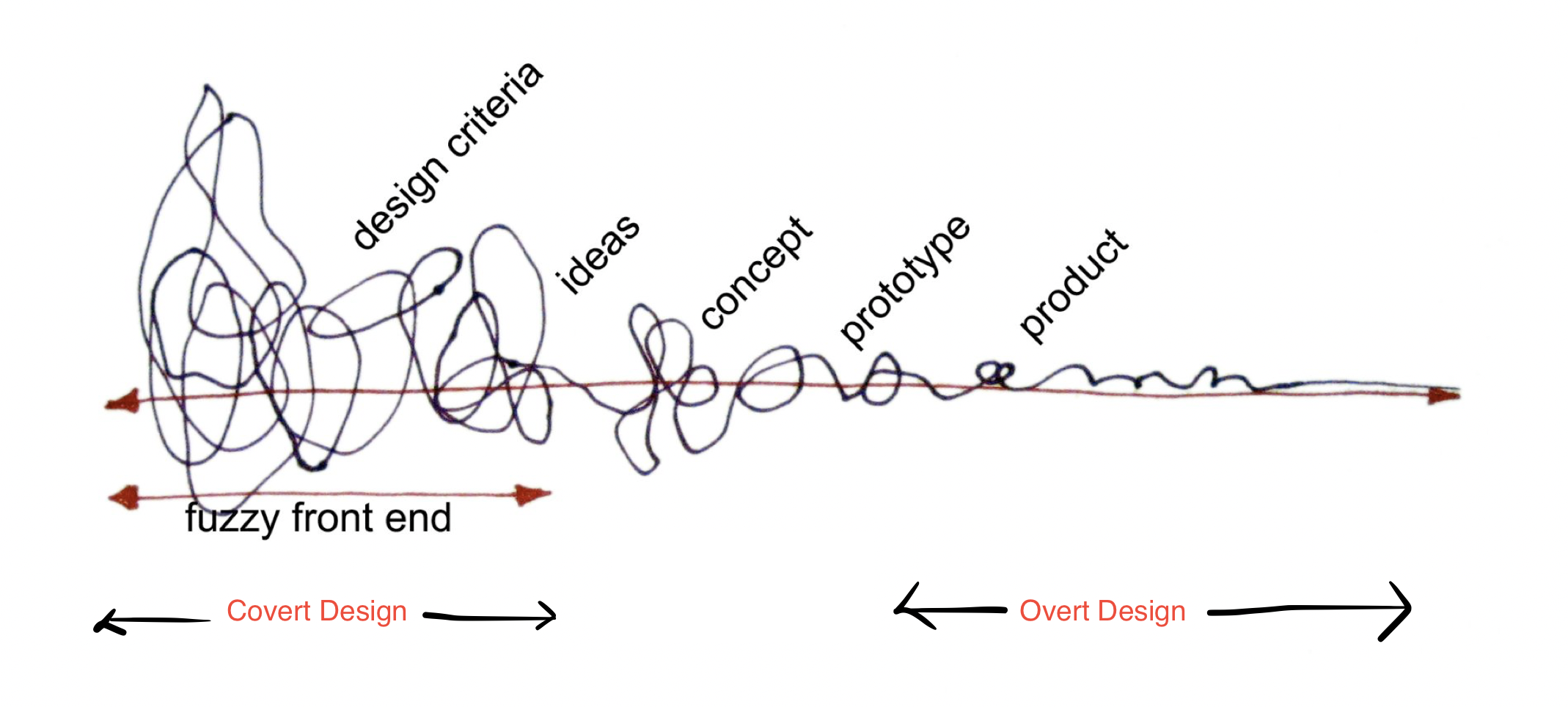2021
Not Everything Lives in a Design File
An essay on how design management is an asset for design creatives who want to lead.
For a very long time, the world viewed designers as those who make "stuff look good." We are currently living through a renaissance led by Design that can drive us beyond this conventional notion. Need I remind anyone about what Apple, LinkedIn, Wells Fargo, JP Morgan & Chase have been able to achieve? But no one can truly point out WHAT changed. Surely it’s not ONLY the user interfaces and products. There’s something more... but what?
To unpack further, let us differentiate Design into that which is overt and covert. “Overt” or Visual Design is a familiar concept. It is tangible, observable, and evident to the eye. On the other hand, “Covert Design” is the work that takes place in the wings. By acknowledging the difference, we see how Overt Design has been centre stage for several years. We often attribute Covert Design to creative problem solving or design thinking, which is now in the spotlight. It is a fact that Covert Design is made visible through the visual form/medium. Design management operates in this covert realm or as designers like to call it, towards the “fuzzy front end” where it is messy. Sticky notes, discussions, and rough diagrams don't necessarily scream "well-designed" outputs. However, the value of this mess is immense as it brings order to the underlying chaos.

Due to the qualities mentioned earlier, Overt Design has unfortunately been on the receiving end of being the ornamental element–one that arrives at the end. Historically, designers were viewed as the ones who solely packaged a concept into a sellable form. Corporates considered them mere cogs of the machine, while the fuel was a marketer, analyst, or the strategist. Design Management bridges the gap between these two factions that seem to be warring in real-life scenarios. One can use their design skills to visualise strategies and define hidden frameworks. The visible and invisible operations are a part of the design process and not apart from each other. Recognizing this is critical to a designer or a manager as well as those who lead corporations or governments to generate value for their organisation. Future professionals can generate value for Overt Design beyond ornamentation and inform the scope from inception to realisation. Design Management balances internal functions as well as client-facing deliverables. It would be fair to say Design Management is a stepping stone for design leadership. Without good leadership one cannot optimise the impact of their output. Journals such as Harvard Business Review and DMI have pointed out the intrinsic link between leadership and design management. As cross-functional teams are on the rise, design management has become critical to corporations. Designers, due to the virtue of their occupation, have been practice-oriented. They are often siloed off to merely executing the vision of senior leaders. Design management shares these leadership hats with designers which were previously exclusive to non-designers. This allows for congruence with management by having a visible stake in the business rather than just executing a vision.
Design education plays a vital role in the ways designers function in real-life scenarios. However, it prioritises skill over leadership, and the sense of empowerment comes from the mastery of the craft. Conversely, as design leaders, the focus needs to shift from the skill itself to its impact. Developing skills is only half of an equation. Interpreting the effects of those skills is valuable not only to designers but also to corporations. Educational setups for design need to encourage thinking and leadership as aspects of the design process as much as the craft. This will enable designers to affect change where it matters and not be confined within practice-based silos. Critical thinking is essential to designers as they do not design for the present but the near future. Leading business schools have adopted design thinking to teach innovative leadership to aspiring change-makers. This goes to show that design thinking is not limited to designers. However, when it comes to assuming leadership roles, designers are often excluded from their seat at the table. Design Management skills can equip designers with the right mindset to lead. Organisations, even today are change averse with their top-down approaches. So problem-solving often happens behind closed doors. However, they’re struggle with developing design-led impact. Championing design practices to take informed risks, or developing innovative solutions led by a systems approach are all valuable resources design management can offer. Additionally, it can help bridge barriers by introducing a shared vocabulary between management and design teams. This could result in inclusive C-Suite setups with designer’s seat at the table and create new avenues for possible futures.
Winner of Student Essay Competition for dmi: Design Management Institute’s Design Leadership Conference
Header Image: Academic Project (SCAD, 2021)